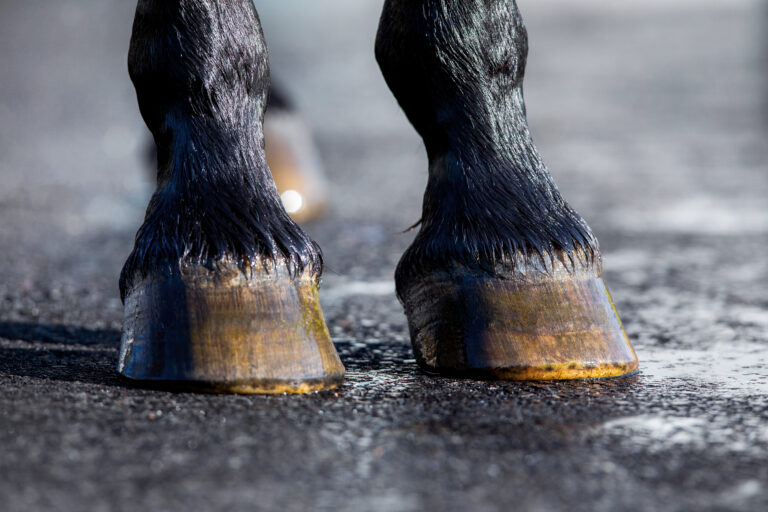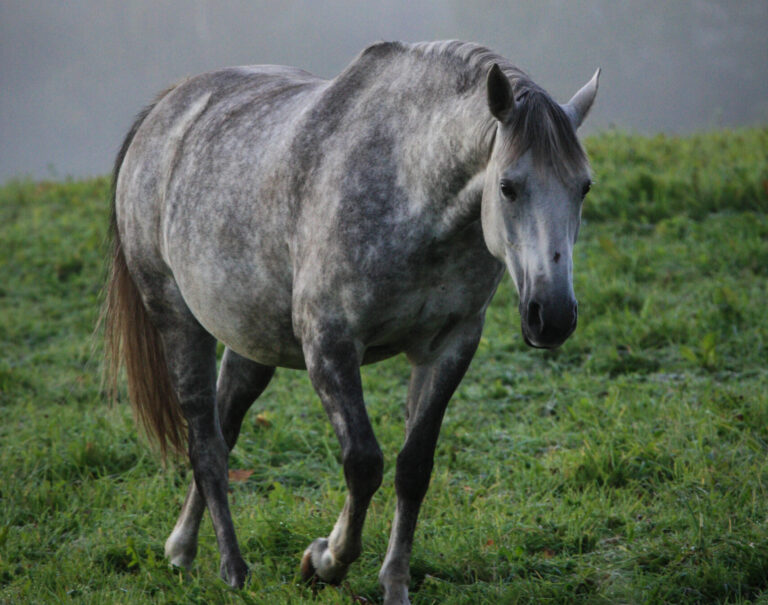
Marc Koene, DVM, founder and partner at the renowned Tierklinik Lüsche GmbH Equine Hospital, in Bakum, Germany, will be detailing how he uses the 2.5% polyacrylamide (PAAG) gel, ArthramidVet®, in his practice. Koene is a board-certified equine specialist, a Fédération Equestre Internationale (FEI) veterinary delegate and veterinary committee board member, an FEI controlled and prohibited substances review committee board member, an IAVC-certified equine chiropractor, and team veterinarian for the German Olympic equestrian team. An early adopter of ArthramidVet®, Koene will outline his approach to osteoarthritis (OA) case selection and how the treatment has helped his patients. We spoke with him ahead of his presentation to give you a sneak peek.
Q: How long have you and your colleagues been using ArthramidVet® in your practice, and why did you pursue it initially?
I have been using ArthramidVet® now for 14 years. We have come a long way, and I was immediately intrigued by the results in chronic-stage OA horses, where conventional therapies did not show effects anymore. These horses were considered loss-of-use cases. It has been since then a game changer in my ability to treat OA sustainably and for the welfare of the horse.
Could you share a few insights into the historical progression of equine OA treatment and explain how ArthramidVet® fits into this evolving landscape?
The treatment of equine osteoarthritis has evolved over time. In the past, treatments were limited to rest, anti-inflammatory drugs, and joint injections. However, advances in veterinary medicine have led to more sophisticated approaches, including regenerative therapies like stem cells and other blood-derived treatments like PRP, ACS, IRAP, and so on. This was a dogma change. Instead of reducing “signs of inflammation and pain” with steroids or non-steroidal anti-inflammatory drugs (NSAIDs) or bringing inflammation into chronic processes by injections of sclerotic (irritating) agents or blistering, these new methods promote tissue repair and reduce inflammation on cellular levels and signaling. ArthramidVet® fills into these regenerative medicine agents. Ongoing research is explaining more mechanisms of action.
There’s often a lot of misinformation surrounding OA treatments. What’s one common myth or misconception that veterinarians should be aware of, particularly in the context of ArthramidVet®?
Indeed, there is a lot of misinformation out there. A lot of producers will claim effects for their gels without scientific evidence. PAAG gels are not the same. We have them for industrial and chemical use, degradable and stable, with foreign body reactions and inert. ArthramidVet® is used as Aquamid® as a facial filler or bulking agent. Same product, different name. But the target tissues are different, and there happens the magic. To be used 100,000 times in “dirty” human faces with little adverse reactions is a plus for our safety studies. We do not want flares or foreign body reactions to happen in the joint. Still, occasionally they do, and mostly it is case-related.
Could you provide some pointers—or a preview of the types of guidelines you’ll be giving at the Sunrise Session—on case selection for ArthramidVet® therapy, and what factors veterinarians should consider?
Case selection is crucial. You need to block your target joint with a low volume of local anesthetic like mepivacaine and, after three to five minutes, you should read a significant improvement in lameness grade. If it is close to 100% and your concurrent imaging does not show exclusion criteria like fissure fractures or subchondral bone disease with connection to the joint space or infectious disease, that is what you can expect as an outcome after four to seven weeks with ArthramidVet® joint treatment.
Could you highlight a standout equine OA case where ArthramidVet® made a notable difference? Or a case practitioners can expect to hear more about in your presentation?
After more than 8,000 patients, it is difficult to pinpoint one standout equine OA case. But nowadays, since a lot of equine clinics use standing CT scanners, we encounter more and more osseous cysts involving difficult joints like the temporomandibular joint (TMJ), where you cannot use standard lag-screw techniques. There we apply ArthramidVet® as well, and the results are very promising. The cysts will stay evident in imaging, but the joint pain vanishes. Used in other joints and tendon sheaths, it does what is most evident when used: It makes a thin joint or tendon sheath out of a filled synovial structure.
What developments can attendees look forward to learning about in your presentation—any research in progress?
In the beginning everyone believed results came from a long-lasting lubricant effect to the cartilage. Others believed it was coating nerves and, therefore, masking pain. This was wrong. The gel integrates into the synovium after 14 days completely. ArthramidVet® is the only gel with an extensive list of research to it. Tnibar et al. explained the role of capsule elasticity in OA before and after injection. Christensen in Denmark and Lowe and de Clifford showed the histological effects after treatment. At the moment there is ongoing research for the EMA (European Medical Agency) concerning rheology and cytokines of synovia and, in the U.S., in 2024 Colorado State University will begin a clinical trial using the validated carpal chip model with the ArthramidVet® gel. It seems like the transcription of macrophages by the gel plays a major role. I am sure that the outcome from this upcoming research will be very interesting.
Don’t miss Koene’s presentation at 6:30 a.m. on Friday, Dec. 1!




